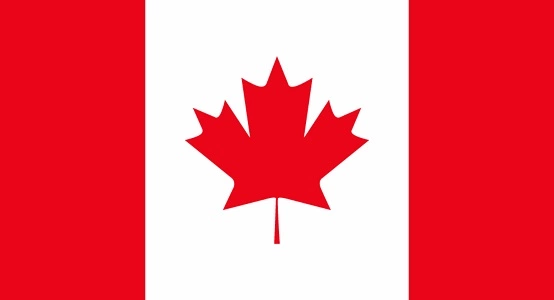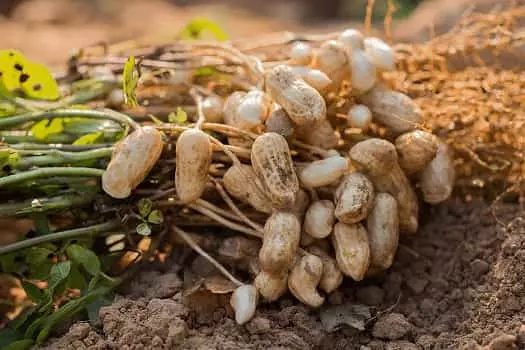Canola is grown as among the most widely grown oilseed crops in the world. Canola production is still viable, and the top production countries see it as a strategic crop. Canola oil is a major factor in this context since it has the potential to compete against olive oil in the food industry, lower blood cholesterol, and prevent strokes and heart attacks.
As a biofuel, it has found widespread application. Livestock can be fed grass, hay, or flour. One hectare of these plants can yield anything from 60 to 90 kilogrammes of honey from busy bees.
According to Kleffmann Group, the global canola area in 2022 was 35 million hectares. Canola was planted on 29.8 million hectares (ha) by the top five producers, who together accounted for 85 percent of all sown land.
- Australia: 1.9 mln ha
- EU: 5.6 mln ha
- China: 6.6 mln ha
- India: 7.3 mln ha
- Canada: 8.4 mln ha
With other areas of this crop, Switzerland, Turkey and Chile has ranked on top, followed by some of the EU nations holding average yield of around 3.0 t/ha
Over the past decade, global canola output has risen from 57.3 mln t to 68.2 mln t, an increase of 12 percent. With a 28% share of global output growth over the past 2 years, Canada has been the industry leader, followed by the EU at 25% and China at 19%. Fifth place goes to Ukraine, which has 3.3 mln t. Over a ten year period, both Russia (+215%) as well as the United States of America (+133%) ’Have witnessed significant increases in output.
Canola oil production has increased by 23% over the past decade, reaching 27.4 mln t, or 40 percent of the world’s total crop output. 9.5 mln t & 6.1 mln t of canola oil will be produced in EU and China in 2019/2020, respectively.
Export of canola
According to the most recent USDA figures, overall canola exports have increased by 41% over the past decade (from 2010/11 to 2019/20), reaching 15 mln t. Exports of canola oil are up 87% at 5.1 mln t, and exports of canola meal are up 90% at 6.9 mln t.
In 2019/20, Canada supplied 9.5 mln t, or 62% of total, to foreign markets, making it the world’s top canola exporter. There were a maximum of 6.0 mln t of imports from EU countries, 2.5 mln t from China, and 2.4 mln t from Japan.
Top Countries With Highest Canola Production
Following is a list of top ten biggest canola producing countries
1. Canada
In 2019/2020, Canada dominated canola production & export with 19 mln t produced and 9.5 mln t shipped abroad. Canola oil is also a major industry in the country. Out of last year’s total output of 4.2 mln t, 82%, or 3.5 mln t, were shipped outside.
2. China
Canola is never imported into China since all of it is processed locally. Canola cultivation has shrunk by 0.6 million hectares, or 8%, over the past decade. The crop will span 6.6 million hectares in 2021/2022. This places the nation as the second-largest producer of canola in the world. China is the leading producer of canola oil in 2021/2022with 6.1 million metric tonnes of output. However, because almost all of this oil is used in China, the country exports less than one percent of its total production.
3. India
India maintains its position as one of the top three countries in terms of the enormous regions under cultivation of this oilseed crop. Over the course of the last decade, the 30% rise in seeded lands has resulted in an increase in canola production of around 15.x to 7.7 mln t. However, yields continue to be among the world’s lowest, coming up at only 1.1 tonnes per hectare.
4. France
With a canola output of 3.1 tonnes per hectare, France maintains its lead position as the leading producer in Europe. Over the course of the previous year, there was a 29% decline in the area that was planted, which led to a decrease in production of 1.4 million metric tonnes, or 29%. Pests can be considered one of the contributors to this decline in population.
Since the prohibition on the use of insecticides that contain neonicotinoids was instituted in France, it has become increasingly challenging for farmers there to keep insects under control.
5. Ukraine
Winter canola accounts for 97percentage of the entire area planted in Ukraine, while spring canola is only planted on 3% of the country’s total agricultural land (colza). The amount of land in Ukraine dedicated to growing canola has expanded by 182% to 1.3 million hectares over the course of the past three years. As a result, the country’s canola production has grown by 182% as well, reaching 3.3 million tonnes. Exports account for over 90 percent of all canola production. The domestic plant receives 0.37 million metric tonnes on a regular basis.
6. Germany
When compared to the other member states of the EU, Germany’s production of canola accounts for 17% of the total. The total area that was planted has reduced by 0.3 million hectares, or 27%, as comparison to the prior year. This has resulted in a 20% drop in production, which is now at 3 million tonnes.
7. Poland
In Poland, one of the most common oilseed crops is called canola. Canola production in this country accounts for 14% of the overall output, placing it among the top producers worldwide and third in the EU. In the past five years, there has been a 13% decrease in the harvested area and a 30% decrease in the production volume.
8. Australia
In the 2019/20 agricultural year, Australia’s production of canola constituted 89% of the country’s total oilseeds output. Recent season in Australia were characterized by severe weather occurrences as well as a decrease in seeded areas, which has resulted in a poor yield. Over the past two years, output has decreased by 41%, coming in at 2.3 million metric tonnes. The remaining amount, which is around 0.8 million tonnes, is processed locally. Nearly eighty percent of it is exported.
9. Russia
Over the past ten years, the area that has been harvested has expanded by far more than 2.5 times, reaching 1.4 million hectares (ha) in 2019/20. The production of canola in Russia increased by more than threefold to 2.1 million metric tonnes, and it now accounts for nine percent of all oilseeds produced.
More over 70 percent of it is refined into oil & oil cake for home consumption, while the remaining 26 percent is shipped overseas.
10. United Kingdom
The United Kingdom comes in tenth place globally and holds the tenth largest share of the overall production, placing it in fourth place within the European Union. Canola agriculture in the nation is seeing a decline in popularity; as a result, the total amount of canola produced has decreased by 19% – 1.8 million metric tonnes in just the past two years. Because of this, in the future there will be an increase in the amount of this crop that is imported from other nations.
Final thoughts
Cooking with canola oil is a tasty option, and using it has many positive effects on our health. Due to the low amount of saturated fats it contains, it not only acts as a powerful antioxidant but also helps to protect our skin and maintain a steady heart rate. Diesel fuel, biodiesel (either straight or melded with petroleum distillates), hydraulic fluids, plastics, and a biolubricant for use in biomedical applications are some of the many applications that can make use of canola oil.
Canola oil can be used as either straight biodiesel or mixed with petroleum distillates. Erucic acid, which may be found in canola, is typically put to use in settings that demand a high degree of thermal stability.
The (USDA) projects that the global production of canola in the market year 2021/2022 would be slightly higher over 72.1 million metric tonnes. This represents a decrease of 1.4 million tonnes in comparison to the production level in the market year 2020/2021. As a result of the meteorological conditions and the current state of the market, it is quite likely that this year’s harvest will represent a reduction of 0.98% in canola production across the globe.
Thus the above mentioned countries stand on the largest position for producing canola as per 2022-2023.
Canola Production FAQS
Q1. What is the total global production of canola?
Ans: The total global production of canola is approximately 75-80 million metric tons per year.
Q2. What are some factors that affect canola production?
Ans: Factors that can affect canola production include weather conditions, such as drought or excessive moisture, pest and disease outbreaks, market fluctuations, and changes in government policies.
Q3. What are the major uses of canola produced worldwide?
Ans: The majority of canola produced worldwide is used for the production of vegetable oil, which is used for cooking and food processing. Canola oil is also used in the production of biodiesel, as a feedstock for the chemical industry, and as a lubricant.
Q4. What are some challenges faced by canola producers globally?
Ans: Challenges faced by canola producers globally include increasing competition from other oilseed crops, such as soybeans and palm oil, as well as concerns over the environmental impact of intensive farming practices. There are also challenges related to sustainability and social responsibility, such as ensuring fair labor practices and minimizing the use of pesticides and fertilizers.
Q5. What is the production process for canola oil?
Ans: The production process for canola oil involves several steps, including cleaning and grading the seeds, crushing them to extract the oil, refining the oil to remove impurities, and packaging it for distribution.

























